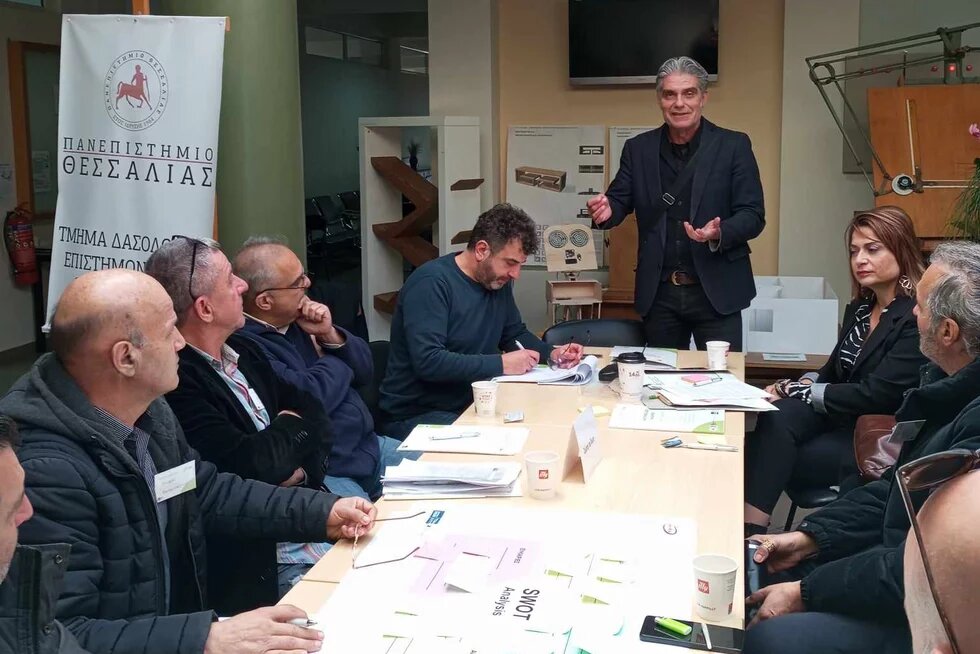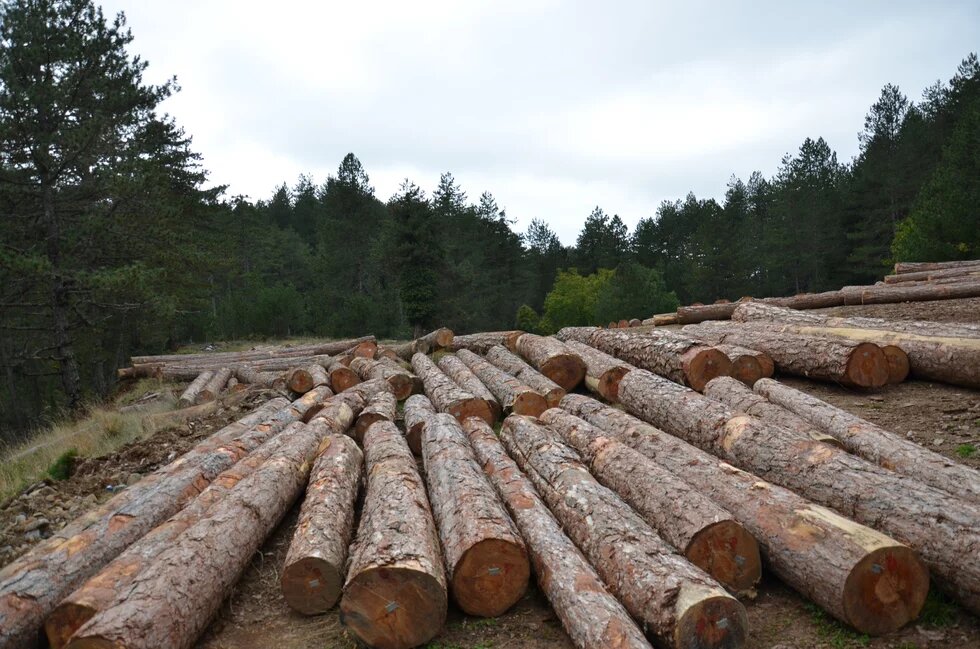
The Development Agency of Karditsa (D.A.K.) provided its own response to the devastating floods that swept through the Thessalian Plain in the autumn of 2023 by organizing the 1st Hackathon Idea Competition. The goal was to develop innovative ideas in the fields of environmental sustainability and resilience against the impacts of climate change. The event took place on Sunday, December 10, 2023, at the Department of Forestry, Wood Sciences, and Design at the University of Thessaly in Karditsa, in collaboration with Impact Hub Athens as part of the Rural Innovation project.
Six working tables were organized, each with distinct thematic units (“Roots & Tree Tops”, “Aromatic Harvests: Growing an Aromatic Future”, “Socially Supported Production (local product promotion center)”, “Agri-food circular solutions”, “Save the Forests”, “Paths for Sustainable Travel”), and about 60 people participated in total. Ideas and plans were submitted that could form the basis for funding proposals, in an effort, as the organizers said, “to turn disaster into hope”.
The Heinrich Böll Foundation - Thessaloniki Office participated in the thematic session titled “Save the Forests” by recording the reasoning, concerns, and conclusions. The team, which also won third place, included forest engineers Ioanna Anastasiadou, Vasilis Filippou, Kostas Kallioglou, and Achilleas Katsaros, forest rangers Eleftheria Lafazani and Thomas Oikonomou, forest worker Alexandros Spanos, retired professor on behalf of the Itamos Mouzaki civic non-profit company Thomas Kalampalikis, and Timoleon Argyros on behalf of the Vatsounia Cooperative. The session was coordinated by Assistant Professor Marios Trigas from the Department of Forestry, Wood Sciences, and Design at the University of Thessaly.

The management of forest biomass –and more precisely, surplus biomass– is one of the major challenges today in Greece. This term refers to all organic material residues found in a forest, which can potentially serve as raw material for energy production: products derived from forest cleaning, logging residues, foliage, dead standing trees, etc.
It is estimated that 8% of the logging product is abandoned in the forest, although management studies predict its removal. It is noteworthy that contractors often prefer to pay the prescribed fine, which is only 1.500 euros, rather than paying workers to remove the logging residues. This, combined with the failure to remove dry or fallen trees and branches, results in the gradual accumulation of a large amount of flammable biomass, which acts as fuel for the wildfires that break out every year and grow in intensity, with dramatic consequences for ecosystems.
Yesterday and today
This was not always the case. In the past, almost every mountain village had a forestry cooperative, whose members, under the guidance of the relevant authorities, took care of the forest and built small dams to regulate streams and hold back the soil. This activity contributed to the sustainability of the forest and the viability of mountain communities, as it provided some income, mainly for the youth of the village.
However, in recent decades, these practices have been abandoned, and forestry services have been understaffed and declined. It is estimated that in 20% to 30% of the country's forests, no management studies have been conducted, and in some cases, the existing ones are not implemented. These are mainly municipal and public-owned forests, which are managed by private individuals, municipalities, or cooperatives.
Strength in unity
The workshop held in Karditsa explored an interesting proposal regarding the utilization of biomass. Specifically, it examined how this utilization could be achieved by the collaboration of Social Solidarity Economy (SSE) projects, forestry cooperatives, energy communities, and other local community actors, science experts, public services, and wood companies producing products such as firewood, pellets, woodchips, or MDF boards. The ultimate goal of such collaborations is the sustainable development of the forest, the sustainability of the environment, and social well-being, without neglecting economic benefits – always with the understanding that the forest is a social good.
However, the implementation of this proposal requires a series of conditions, such as setting new standards for forest cleaning and biomass management and applying environmental criteria regarding the innovation to be used. It is also very important that the biomass be provided free of charge to the above collaborations, and the ways of utilizing it should be subject to public consultation, so that it benefits everyone – the forests, the cooperatives, and the residents living in communities near the forests.
Strengths and weaknesses
Such utilization, in addition to making a decisive contribution to fire protection, could produce a wide variety of products with identity and added value, promote sustainability and reforestation, utilize new technologies (e.g., drone mapping), provide economic incentives linked to the degree of difficulty, encourage collaborations, and increase participation.
However, there are also many obstacles, such as the lack of a stable and continuous policy regarding management, as well as the nonexistent or outdated management studies. Moreover, there are no cooperation codes between the participants, nor certifications and economic-technical studies now (e.g., a study regarding the cost-benefit relationship for biomass extraction). The implementation of the proposal is further undermined by various other factors, such as the cost of energy for machinery, understaffed public services, competition with other forms of energy, or even the indifference of local communities toward relevant prohibitions and restrictions. The most important issue is the lack or ambiguity of the legal framework, especially regarding who is responsible for the collection and transport of biomass.
Conclusions
This model of multi-actor partnership for the management of forest biomass, as outlined by the University of Thessaly and the Development Agency of Karditsa, could be a solution to urban energy poverty and contribute to the democratization of fuel. However, even for its pilot implementation, it is necessary to prepare an economic-technical study that demonstrates the potential for positive long-term results, with the local population in focus. In any case, the proposal must align with the National Energy and Climate Plan (NECP), which provides a detailed roadmap for achieving specific energy and climate goals by 2030. Finally, a communication plan is crucial for its success, which will organize informational events with municipalities, the General Secretariat of Forests and the Forestry Service, relevant scientists, and the Chamber of Commerce. It will also raise awareness among stakeholders and citizens about their participation, addressing any fears or misconceptions, such as the idea that forest biomass products contribute to smog.
In general, what is deemed necessary is legislative regulation and the development of a comprehensive strategic forest management plan within the framework of the green transition and the circular economy.